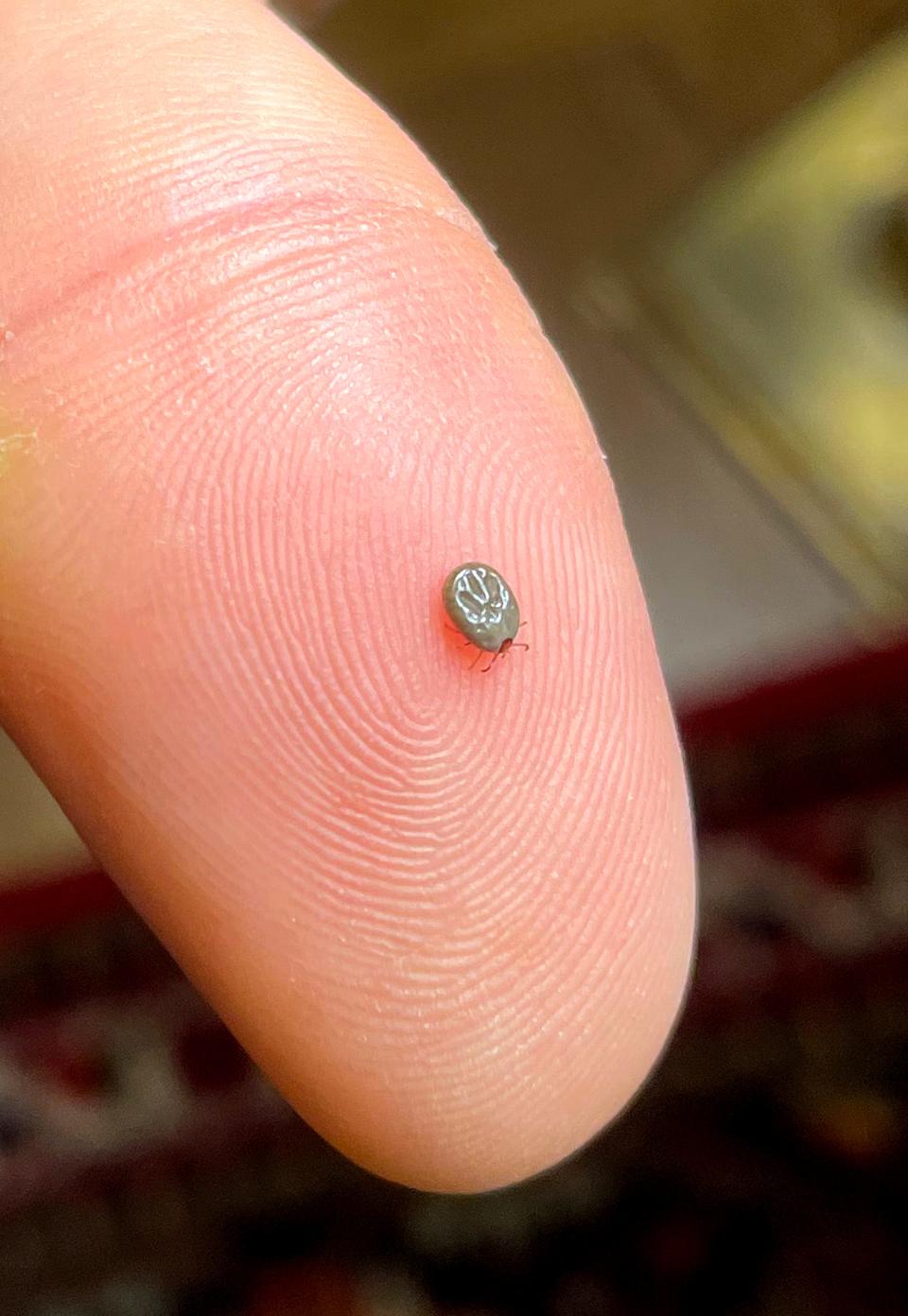It's tick season. What to know about prevention, removal and tick-borne diseases
Most Oklahomans are familiar with those little brown or gray parasites that hide out in tall grassy areas in the late spring and summer, waiting for a host to engorge on.
It's tick season from now until around September, and it's important to know what to do if you are bitten, how to determine the species of tick, what diseases it might be carrying and whether you should get it tested.
How to prevent ticks in Oklahoma
The best way to prevent ticks is to know where to expect them and avoid those areas. According to the CDC, ticks live in "grassy, brushy, or wooded areas, or even on animals." If you're hiking or camping, stay on the center of trails.
Clothing and gear can be treated with permethrin to repel ticks, or any insect repellant with DEET, picaridin, IR3535, Oil of Lemon Eucalyptus (OLE), para-menthane-diol (PMD), or 2-undecanone.
After spending time outdoors, always check your clothing, outdoor gear, skin and pets for ticks, and shower as soon as possible.
For dogs, talk to your veterinarian about the best tick preventative to use. In addition, reduce tick habitat in your yard, check your dog for ticks daily and if you find one on them, remove it immediately.
What should I do if I find a tick on me? How to remove a tick from skin

Avoid "folk" remedies such as applying nail polish, petroleum jelly or heat to cause a tick to detach. The tick should be removed from your skin as quickly as possible.
The CDC has a "Tick Bite Bot" that will provide instructions for removing a tick and what to do next. It's important to not jerk or twist the tick, as this could leave its mouth embedded in the skin.
Use the same instructions for removing a tick from a pet.
How to get rid of a tick
A tick can be disposed of by putting it in alcohol, placing it in a sealed bag or container, wrapping it tightly in tape or flushing it down the toilet.
You should never crush a tick with your fingers, according to the CDC.
What to do after a tick bite
After removing the tick, the majority of people will be fine. But, keep an eye out for any new symptoms over the next 30 days.
Concerning symptoms could include fever or chills, rash, nausea or vomiting, headache, body aches, joint pain, tiredness, or swollen lymph nodes. If you develop any of these, you should see your doctor. If you still have the tick in a sealed container, bring it to your appointment.
Should I have a tick tested for disease?
The CDC does not recommend using commercial laboratories to have ticks tested.
For one, a positive test showing the tick contains a disease doesn't necessarily mean you've been infected. And a negative result could lead to false assurance, as another tick may have bitten you that was infected.
"If you have been infected, you will probably develop symptoms before results of the tick test are available," the CDC says. "If you do become ill, you should not wait for tick testing results before beginning appropriate treatment."
What types of ticks live in Oklahoma, and what diseases can they spread?
Once you've found or removed a tick, it's important to see if you can determine its species. The CDC has photos of ticks that live in the United States, along with disease and usual host information.
Here are the ticks that can be found in Oklahoma.
American dog tick: is widely found in the United States east of the Rock Mountains. This species can transmit pathogens that cause Tularemia and Rocky Mountain spotted fever.
Blacklegged tick: widely found in the eastern United States. This species can transmit pathogens that cause Lyme disease, anaplasmosis, hard tick relapsing fever, ehrlichiosis, babesiosis and Powassan virus disease.
Brown dog tick: found worldwide. This species can transmit the pathogen that causes Rocky Mountain spotted fever.
Gulf coast tick: found mostly along the Atlantic and Gulf of Mexico coasts. The adult ticks have been associated with transmission of R. parkeri, a form of spotted fever to humans.
Lone star tick: widely found in the eastern, southeastern, and south-central United States. This species can transmit pathogens that cause Bourbon virus, ehrlichiosis, Heartland virus, tularemia, and STARI. This is "a very aggressive tick that bites humans," according to the CDC.
This article originally appeared on Oklahoman: Oklahoma tick season: Tick prevention and what to do after a tick bite
